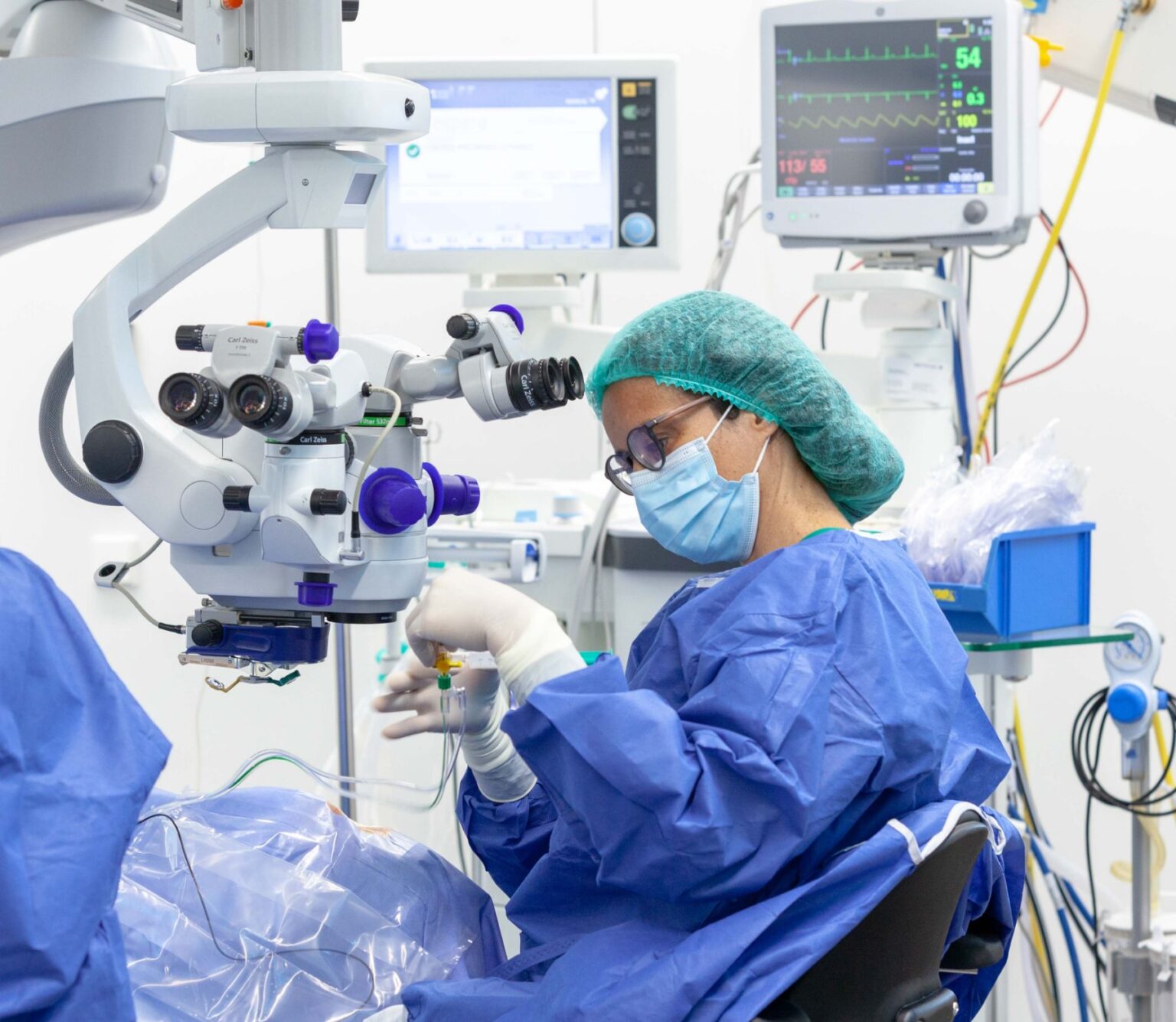Intrastromal corneal rings (ICRs) are biocompatible implants, shaped like semicircular segments, that are surgically placed within the cornea. Their primary purpose is to reshape and regularize the corneal curvature, reducing deformation and, consequently, improving the patient’s visual acuity.
How is the Surgery Performed?
The procedure is performed on an outpatient basis under topical anesthesia. The ophthalmologist makes a small incision in the cornea and strategically places the rings at a specific depth within the corneal tissue using specialized instruments. This modifies the corneal curvature, reducing astigmatism and improving vision.
Benefits of Intrastromal Corneal Rings
ICRs offer several significant benefits for patients with keratoconus, including:
- Improved vision: Significantly reduces blurred vision and astigmatism, resulting in clearer vision.
- Reduced light sensitivity: Can decrease light sensitivity, a common symptom of keratoconus.
- Reduced dependence on contact lenses: In some cases, patients may be able to reduce or eliminate their reliance on contact lenses.
- Reversibility: ICRs can be easily removed if necessary without causing damage to the cornea.
Who is a Candidate for ICR Surgery?
Not all patients with keratoconus are suitable candidates for ICR surgery. Factors that determine candidacy include:
- Degree of corneal deformation: The surgery is more effective for patients with moderate corneal deformities.
- Stability of the disease: The surgery is not recommended if the keratoconus is still progressing.
- Overall ocular health: The patient must have good overall eye health without other conditions that could affect the surgery.
It is essential to consult with an ophthalmologist specializing in keratoconus to determine if ICRs are the best treatment option for your specific case.
